You’ve finally made it to Istanbul, a city that straddles Europe and Asia with stunning architecture, vibrant culture, and mouthwatering cuisine around every corner. While there’s no shortage of incredible things to see and do, no trip to Istanbul is complete without visiting the sprawling Topkapi Palace Museum, once the primary residence of Ottoman sultans for over 400 years. Get ready to dive into the opulent world of the Ottoman Empire as you wander the palace’s many courtyards, rooms, and halls. From the dazzling Harem quarters to the imperial collections of art, weapons, and jewelry, the Topkapi Palace offers a glimpse into centuries of history that you simply can’t miss.
Quickly jump to:
- The history of Topkapi Palace
- The Courtyards
- Harem
- Opening hours of the museum
- Ticket prices for the Topkapi Palace
- How much time do you need
Why you should visit Topkapi Palace
Once home to generations of Ottoman Sultans, the Topkapi Palace Museum is a must-see on any visit to Istanbul. This sprawling complex has a little bit of everything – lavish architecture, precious jewels, an alluring harem, and lush gardens.
Wandering the palace halls and courtyards, you’ll feel transported to a long-vanished era of sultans and viziers, court intrigues and lavish celebrations. The opulent pavilions, jewel-filled Treasury, and fragrant gardens showcase the finest of Ottoman art, culture, and natural beauty.
No trip to Istanbul is complete without exploring this historic landmark. Go early, set aside at least half a day, and prepare to be dazzled at every turn. The Topkapi Palace Museum offers a magical window into the glory days of one of the world’s greatest empires.

A Brief History of Topkapi Palace Museum
The Topkapi Palace was the primary residence of Ottoman sultans for nearly 400 years. Construction began in 1459 under Sultan Mehmed II, shortly after the conquest of Constantinople. Over the centuries, sultans added their own sections, expanding the palace into a lavish complex of pavilions, courtyards, and gardens.
Today, the palace is a museum showcasing the grandeur and opulence of the Ottoman Empire. When you visit, you’ll get a glimpse into the sultans’ private lives and see treasures like jewel-encrusted thrones, golden crowns, and the famous 86-carat Spoonmaker’s Diamond. The palace harem, where the sultan’s family lived, is particularly fascinating.
This sprawling palace provides an unparalleled look into Istanbul’s history. No trip to the city is complete without exploring its courtyards and corridors. With so much to take in, you’ll want to give yourself at least half a day to experience all the wonders of Topkapi.
A Journey Through the Courtyards of Topkapi Palace
The Topkapi Palace Museum is laid out in a series of courtyards, with the most private areas furthest inside. As you explore, you’ll uncover its rich history and many treasures.



The First Court: The Grand Entryway
As you pass through the Imperial Gate, you’ll enter the First Court, an open courtyard and the grand entryway into Topkapi Palace.
Originally called the Parade Court, this was where the Janissaries (elite Ottoman soldiers) would assemble. Now, it’s where visitors like yourself get their first glimpse of the palace’s magnificence. You’ll see the Palace Kitchens, Stables, and the Harem Gate that leads into the private quarters of the sultan’s family and concubines.
The first gate into the palace is called Bab-ı Hümayun (“Gate of Augustus”), built in 1478. As you walk under its arch, imagine the royal processions that once passed through here. The gate separates the palace from the rest of the city, transporting you back in time.
The First Court gives you a taste of the wonders that await. But to explore the inner courtyards and pavilions where the sultans truly lived, you’ll need to pass through the Gate of Salutation. There, a new world of treasures, intrigue, and Ottoman splendor opens up before you.
So take a deep breath and step through the gates of Topkapi. Your journey into the sultan’s private world is just beginning!
Exploring the Second Court and Its Lavish Pavilions
The second court of Topkapi Palace is a treasure trove of lavish pavilions and mansions just waiting to be explored.
- The Pavilion Conqueror was built in 1629 to celebrate the Ottoman victory over the Safavids. This opulent hall features gilded ceilings and Iznik tiles, showcasing the empire’s immense wealth and power.
- The Kanepe Mansion, facing the inner palace, was used for royal audiences and features decorative niches and marble balconies.
- The Pavilions of Judges marked the entrance to the second court. These buildings were used by the Imperial Council for administering justice and reviewing sentences.
Once you pass through the Gate of Salutation, a whole new world of splendor awaits. The second court gives you a glimpse into the lavish lifestyles of the sultans, from the artistry of the royal craftsmen to the intrigue of political life. Take your time exploring the pavilions and imagining what life was like inside this palace within a palace. A journey through the second court is a voyage into the opulence of the Ottoman Empire at its peak.
Marveling at the Treasury and Sacred Relics in the Third Court
Once you’ve entered the Third Court, two of the palace’s biggest highlights await you: the Imperial Treasury and Sacred Relics.
The Imperial Treasury
This lavish chamber houses an incredible array of precious gems and jewelry. Three rooms gleam with gold and silver, as well as rubies, emeralds, and diamonds. You’ll marvel at the Spoonmaker’s Diamond, one of the largest diamonds in the world, as well as the emerald-studded Topkapi Dagger. The Treasury gives you a glimpse into the immense wealth and opulence of the Ottoman Empire.
Sacred Relics
In an adjoining chamber are some of the most revered relics in the Islamic world, including hair from the Prophet Muhammad’s beard, his mantle, sword, and footprint. For Muslims, these relics are deeply meaningful symbols of their faith. Non-Muslims can appreciate them as artifacts providing insight into the Ottoman dynasty’s prestige and power.
The Third Court’s combination of material and spiritual treasures is truly unparalleled. No visit to Topkapi Palace is complete without exploring these lavish rooms, which provide a glimpse into the Ottoman Empire at the height of its glory.
Exploring the Sultan’s Retreat: The Fourth Courtyard of Topkapi Palace
The Fourth Courtyard was the sultan’s private domain and the most secluded area of Topkapi Palace.
The Tulip Garden Pavilion
Here you’ll find the Tulip Garden Pavilion, an ornate structure with a tulip-shaped roof supported by four gold-plated copper columns. This pavilion offered the sultan and his guests a stunning viewpoint of Istanbul and the Bosphorus Strait. Take in the scenic surroundings and imagine the lavish banquets once held here.
The Fourth Courtyard also contained the sultan’s private chambers, council halls, and a mosque for the royal family. Some of the most valuable possessions from the Ottoman Empire were kept under lock and key in this private sanctuary. Lavish decor and gilded architectural details are around every corner.
Today, the Fourth Courtyard offers visitors a glimpse into the opulent lifestyle of the sultans. Walking through this private royal domain, you can envision the power and prestige the Ottoman rulers held for over 600 years.
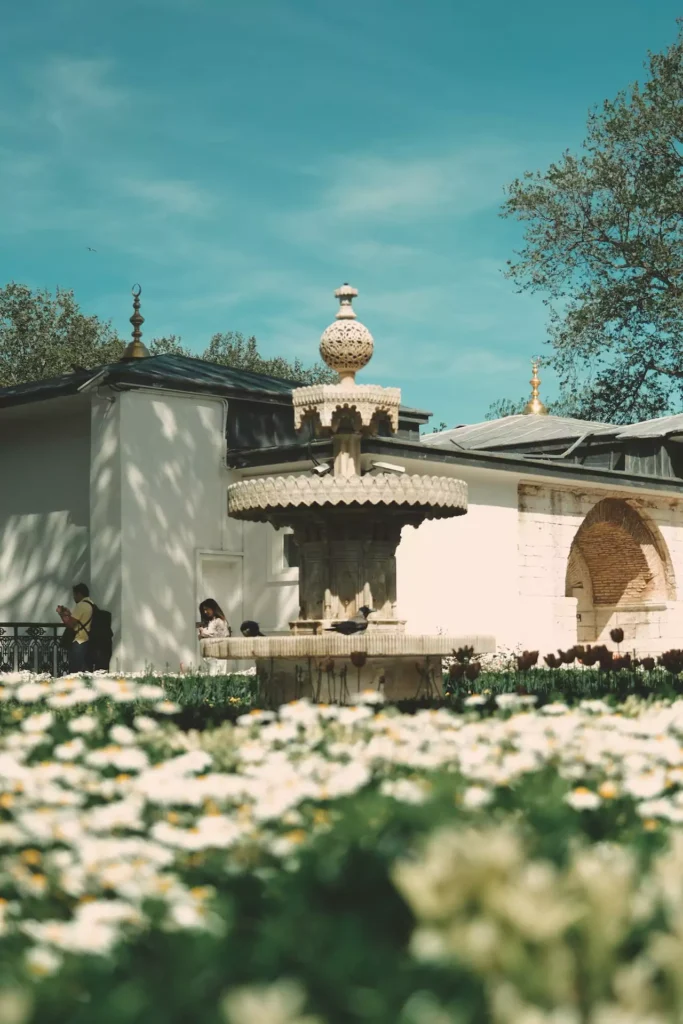
Inside the Magnificent Imperial Harem
Ever wonder what life was really like for the women in a sultan’s harem? At Istanbul’s Topkapi Palace, you can get a glimpse into their secret world. The palace’s Imperial Harem housed the sultan’s wives, concubines, and children for over 400 years. To visit this mysterious section, you’ll need to buy an extra ticket – it’s not included with the general admission. But it’s worth it.
As you walk through the harem’s gilded gates, you step back in time. Lavish rooms are decorated in colorful tiles and ornate woodwork. Marble baths and fountains fill the air with the gentle sound of running water. The mother sultan’s apartment is the largest, a sign of her high status. But smaller rooms where the concubines lived reflect the intimate and confined life these women led, sequestered away from public view.
Peek into this private world and you’ll gain insight into the Ottoman dynasty’s most powerful figures – the sultans and their wives, who influenced politics from behind the harem’s walls. A visit here provides a glimpse into a mysterious world of political intrigue, secret romances, and the captivating feminine power within this male-dominated society.
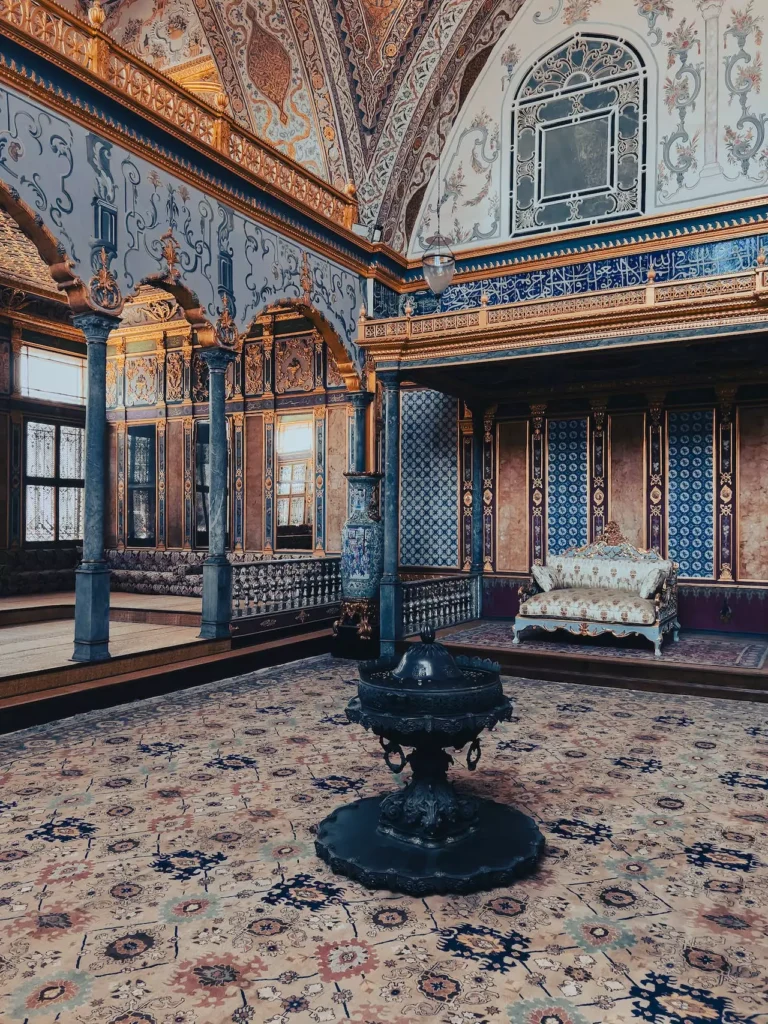
Step Inside the Mysterious Imperial Harem
The harem functioned as the personal apartments of the sultan, housing his mother, wives, concubines and children. Today, only a portion is open for visitors, but what you can see is spectacular. The Imperial Hall, the largest room, served as the reception area. Decorated with colorful tiles, it’s easy to imagine the grandeur of special occasions here.
The harem complex contained over 400 rooms, including lavish bed chambers, lounges, hamams (Turkish baths), and a hospital. The Valide Sultan, or sultan’s mother, oversaw daily life in the harem which at times housed over 800 people. The secluded world within Topkapi’s walls gave the Valide Sultan and other women considerable power and influence.
A labyrinth of cobbled paths, picturesque courtyards and delicate arches connect the harem’s rooms and halls. As you wander under stained-glass windows and painted domed ceilings, surrounded by centuries of history, you’ll gain insight into the private lives of the sultans in this city they once ruled. The harem’s beauty and mystery will linger in your memory long after leaving Topkapi’s gilded gates.
Architectural details to admire in the Harem Section
Hünkar Table
This place, with the largest dome in Topkapı Palace, was the ceremony and reception hall of the sultans. The Hünkar Table was built in the 16th century by Architect Davut Aga. The current decoration of the place, which has undergone fires and repairs, was made in the mid-18th century during the reign of Osman III. The clock, a gift from Queen Victoria of England, is at the bottom left. The blue-white tiles in the Rococo decorated hall came from the Netherlands (Delft).
Hünkar Hammam
The bath, which consists of a changing room, warmth and coldness, has column capitals from the 16th century. The partition with gilded bronze railings is the Sultan’s private bathing place. The railings were built for security purposes.
Murad III private room
Built in 1579 by Mimar Sinan, the room was the sultan’s private apartment and official reception hall. Covered with 16th century Iznik tiles, the hall is one of the most magnificent structures of Ottoman architecture.

Things to do at Topkapi Palace in Istanbul
Once inside the palace complex, you’ll have many options for exploration. Here are some of the highlights:
- The Imperial Council: This ornate hall was where the sultan held meetings with his viziers and other officials. Marvel at the gorgeous domed ceiling and Iznik tile fireplace.
- The Treasury: One of the world’s finest collections of artifacts, with a dazzling array of gold, jewelry, and precious gems. Don’t miss the Spoonmaker’s Diamond, the fifth largest in the world.
- The Harem: The private living quarters of the sultan’s family, consorts, and servants. Lavishly decorated, giving a glimpse into the intimate lives of the Ottoman rulers. Access is by guided tour only.
- The Palace Kitchens: Massive kitchens that produced meals for up to 4,000 people a day. Copper pots and utensils line the walls, and the giant stone hearths and chimneys are architectural wonders.
- The Divan: Ornate audience hall where the sultan received visitors and held court. The beautiful domed ceiling is painted in traditional Ottoman motif.

With its opulent decor, valuable treasures, and historical significance, you could easily spend a whole day exploring the Topkapi Palace Museum. Take your time—you’ll want to soak in all the grandeur and intrigue this place has to offer.
Topkapi Palace Museum opening hours
The Topkapi Palace Museum is open daily except on Tuesdays, with varying hours depending on the season. During the summer months (April 1 – October 31), it operates from 9:00 am to 7:00 pm, and the museum and harem section close at 6:00 pm. In the winter season (November 1 – March 31), the museum is open from 9:00 am to 5:00 pm, with the museum and harem section closing at 4:30 pm. Please note that the ticket booth closes one hour before the museum’s closing time, and the last entry to both the museum and harem is allowed 30 minutes before closing. Given the museum’s extensive size, it’s advisable to arrive early and allocate at least 3 to 4 hours for a thorough exploration, as the Harem section, particularly in the summer and on weekends, tends to be crowded.
Topkapi Palace Museum ticket price
| Ticket | Local Visitor Ticket Price | Foreign Visitor Ticket Price |
|---|---|---|
| Topkapi Palace Museum Entrance | 150 TL | 750 TL |
| Topkapi Palace Combined Ticket (Topkapi Palace + Hagia Irene + Harem) | 200 TL | 950 TL |
| Harem Entrance | 80 TL | 350 TL |

How to get tickets for Topkapi Palace Museum
Getting tickets to explore the Topkapi Palace Museum is easy. You have a few options:
- Buy a ticket at the museum entrance: When you arrive at the palace, head to the ticket booth at the Imperial Gate (Bab-i Hümayun). Tickets cost 750 TL. The booth accepts cash and credit cards.
- Buy your ticket online in advance: For the best deal, purchase an e-ticket on the museum’s website before your visit. E-tickets cost 750 TL and allow you to skip the ticket line. Print your e-ticket or show it on your mobile device when you enter the gate.
Enter the Topkapi Palace Museum with a Museum Pass
The most convenient (and budget-friendly) choice is the Museum Pass Istanbul. For 2.250 TL, you get access to Topkapi Palace and other major museums in Istanbul. The pass covers your entrance fee and allows multiple entries to each museum. You can buy it at any museum ticket shop or order it online.
How to get to Topkapi Palace?
- Public Transport: The palace is just a short walk from the Sultanahmet and Gülhane tram stop. Take the tram T2 and get off at Sultanahmet or Gülhane. From there, it’s only about a 5 minute stroll to the palace entrance. You can also take bus lines 36T, 37T or 38T and get off at Sultanahmet. Keep in mind that you need an Istanbulkart if you want to use public transport.
- On Foot: The palace is located in Sultanahmet, Istanbul’s historic district, so it’s within walking distance of many major attractions like the Hagia Sophia and Blue Mosque. If you’re staying nearby, walking over is a great way to soak in the atmosphere and see some of the old city. Just head in the direction of Sultanahmet Meydanı, the main square, and you’ll spot the palace entrance.

Tips for avoiding crowds and long queues
- Visit early: Arrive as soon as the museum opens, especially in summer. This will allow you to explore the palace grounds and rooms before the big tour groups arrive. You’ll have a better chance of getting photos without hordes of people in the background and really soak in the atmosphere.
- Buy your ticket in advance: Purchase an e-ticket on Topkapi Palace’s website to skip the ticket queue. Or buy a Museum Pass Istanbul which includes admission to Topkapi Palace and other major museums. Using the pass, you can enter through a dedicated entrance with no queue.
- Focus on one section at a time: Don’t try to see the entire palace complex in one visit. Topkapi Palace is huge, so pick one or two sections to focus on, like the Imperial Treasury, Harem, or Imperial Council rooms. Come back another day to tour the parts you missed. This way you won’t feel overwhelmed by how much there is to see.
- Avoid weekends and public holidays: Weekends, especially Sundays, tend to be very busy. And during public or school holidays, Topkapi Palace will be packed with visitors. If your schedule allows, visit during the week when there are typically fewer people. Your experience will be far more enjoyable without the big weekend crowds.
How much time do I need for the Topkapi Palace?
To fully experience the Topkapi Palace Museum, you’ll want to set aside at least half a day, if not a full day. This sprawling palace complex contains hundreds of rooms across four courtyards, as well as several ancillary buildings like the Harem Apartments.
There’s simply too much to see and soak in with just a quick visit. Take your time exploring the palace at a leisurely pace so you can appreciate the stunning architecture, historical artifacts, and get a sense of what life was like for the sultans and their families during the Ottoman Empire. The opulent Harem Apartments and dazzling Imperial Treasury alone are worth a few hours.
Aim for arriving when the museum opens to beat the biggest crowds. An early start will ensure you have plenty of time to see the must-sees without feeling rushed. If needed, you can always return for a second day to see anything you missed on your first visit. For budget-friendly access, buy a Museum Pass Istanbul which includes entrance to the Topkapi Palace and several other major museums.
Conclusion
So there you have it, a complete guide to exploring the magnificent Topkapi Palace Museum. With its lavish architecture, opulent decor, sprawling gardens and intriguing history, you’ll easily spend an entire day discovering all it has to offer. Don’t miss out on experiencing this cultural landmark for yourself. Head to Istanbul, buy your museum pass, and immerse yourself in the Ottoman era as you wander the palace halls. You’ll come away with a newfound appreciation for the sultans that once called this place home, as well as memories that will last long after you’ve left the city behind. What are you waiting for? Your Istanbul adventure awaits!
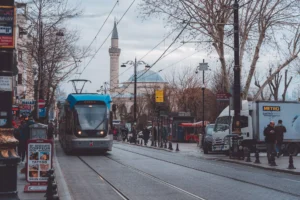
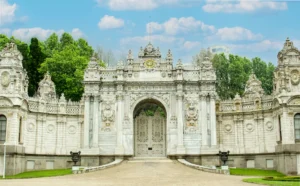


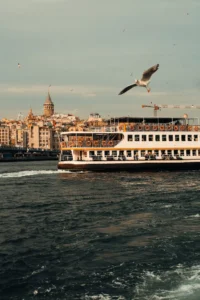
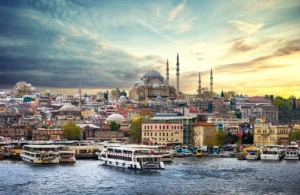
[…] Sophia. Its prime location allows visitors to easily explore other iconic landmarks such as the Topkapi Palace and the Grand Bazaar, making it a must-visit destination for tourists from around the […]
[…] Pass Istanbul. With these two cards, you can easily visit the places around Hagia Sophia such as Topkapi Palace, Basilica Cistern, and the Museum of Turkish and Islamic […]
[…] Topkapi Palace Museum […]
[…] Topkapi Palace Museum […]